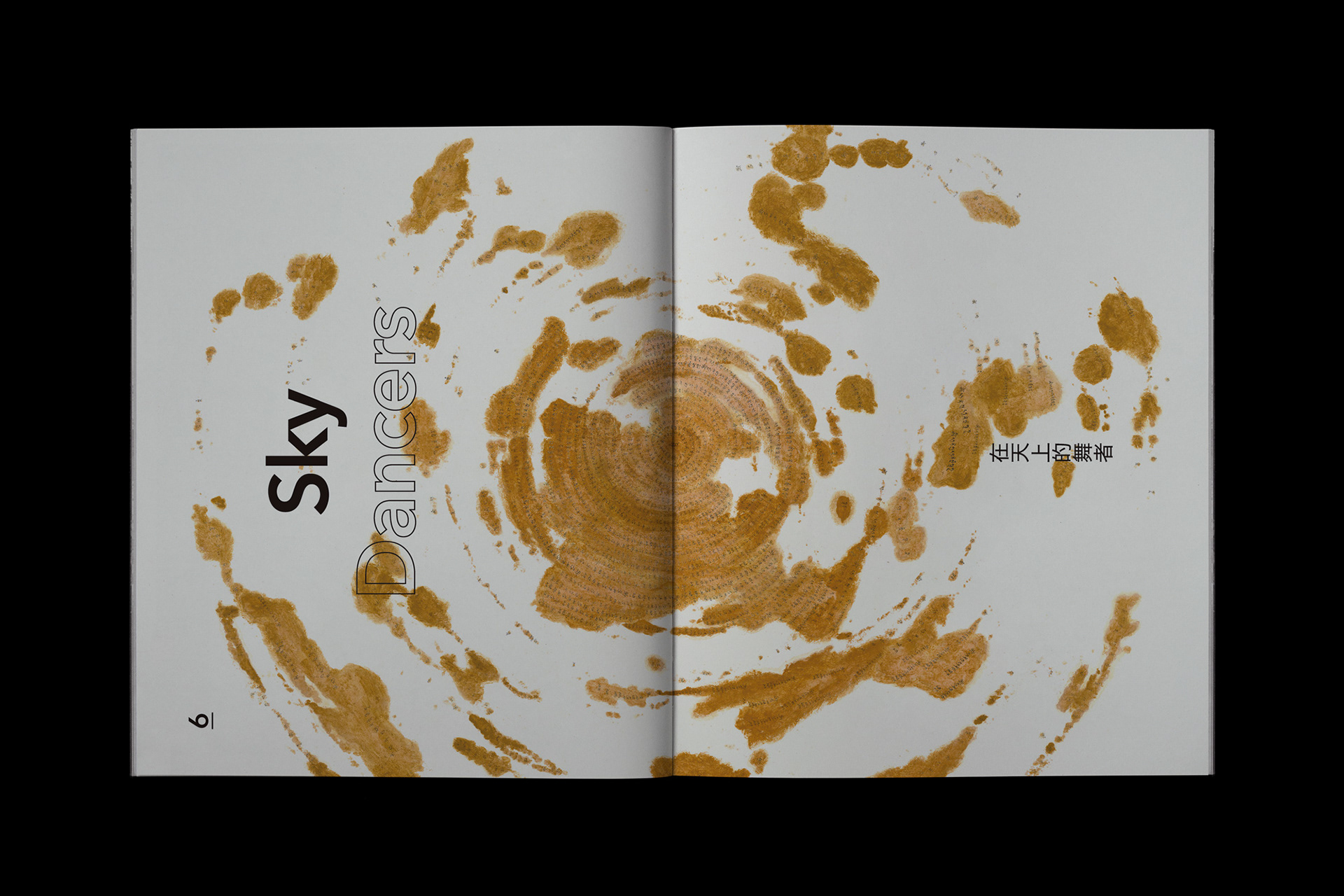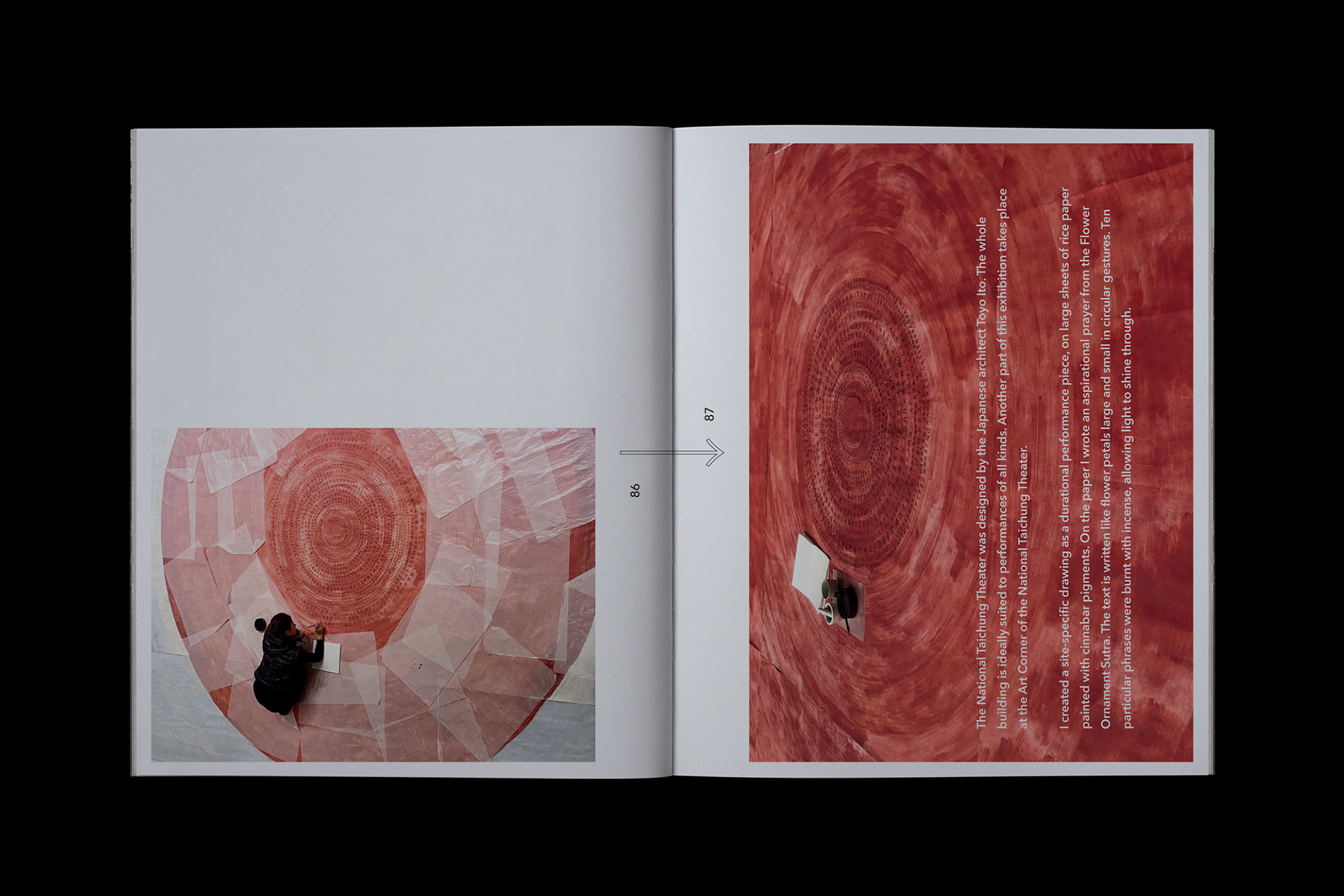─
藝術家蔡佳葳個展展覽名稱中的「兩界」,取自日本高野山真言宗的「金剛界」與「胎藏界」曼陀羅圖形,字義上同時具有陽剛陰柔、堅固柔軟的相對意涵。作品輯的討論過程中,藝術家期望閱讀方向能有所改變;宗薩欽哲仁波切在訪談中也提到──曼荼羅不具一定的方向性,沒有絕對順序與階級、中心和邊界,它不過就是「一」。(It’s just one.)
Two Realms, the title of Tsai Char Wei’s solo exhibition, references the Vajradhātu and Garbhadhātu mandalas in Japanese Shingon Buddhism—symbols of duality: firmness and softness, masculine and feminine.
Inspired by the artist’s wish to shift the reading perspective, and Dzongsar Khyentse Rinpoche’s insight that a mandala has no fixed direction—“It’s just one”—the book invites the reader to move through four reading orientations.
Arrow markers guide the flow, and as the final page is turned, the book completes a full clockwise rotation, returning to its beginning—mirroring the mandala’s wholeness and the artist’s journey.
藝術家蔡佳葳個展展覽名稱中的「兩界」,取自日本高野山真言宗的「金剛界」與「胎藏界」曼陀羅圖形,字義上同時具有陽剛陰柔、堅固柔軟的相對意涵。作品輯的討論過程中,藝術家期望閱讀方向能有所改變;宗薩欽哲仁波切在訪談中也提到──曼荼羅不具一定的方向性,沒有絕對順序與階級、中心和邊界,它不過就是「一」。(It’s just one.)
結合兩者觀點,我們透過單元規劃與頁面配置,讓讀者經歷四種閱讀方向,版面中心以箭頭做為閱讀提示,維持易讀性。當翻閱至最後一頁時,整本書也順時鐘旋轉一圈,回到起始方向,呼應曼陀羅「一」的概念,也象徵藝術家追尋的旅程。
─
Graphic Design:Kuo Yen-Hung 郭彥宏
Artist:Tsai Char-Wei 蔡佳薇
Scene Photo Credit:LIVE FOREVER FOUNDATION 陸府生活美學教育基金會
Client:LIVE FOREVER FOUNDATION 陸府生活美學教育基金會
Graphic Design:Kuo Yen-Hung 郭彥宏
Artist:Tsai Char-Wei 蔡佳薇
Scene Photo Credit:LIVE FOREVER FOUNDATION 陸府生活美學教育基金會
Client:LIVE FOREVER FOUNDATION 陸府生活美學教育基金會



